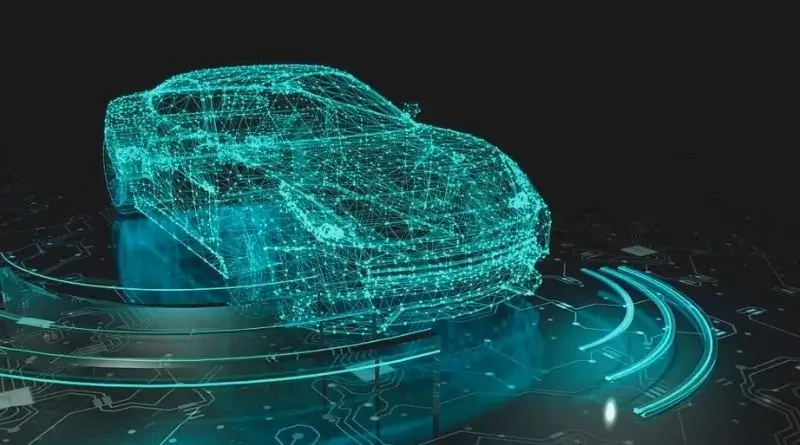Latest Tech in the Automotive Industry: The Future of Driving
Last updated on July 19th, 2024 at 07:47 am
The automotive industry is constantly evolving with new technologies that aim to make driving safer, more efficient, and more enjoyable. This article will explore some of the latest technologies in the automotive industry that are changing the way we drive. From electric cars to autonomous vehicles, we’ll delve into the future of driving.
Autonomous Electric Cars – The Future of Transportation
Electric cars have been around for quite some time now and are considered to be the future of the automotive industry. While they’re becoming more popular every day, in any case, fully electric vehicles do not allow drivers to travel in complete autonomy.
But despite that, with the increasing demand for sustainable and eco-friendly transportation, electric cars offer a viable solution. Some of the latest electric cars, such as the Mercedes-Benz EQS 450+, can travel up to 350 miles on a single charge, making them a practical option for everyday use.
To address the shortcoming of autonomy while keeping sustainability intact, autonomous electric vehicles are introduced.
Autonomous vehicles are the next big thing in the automotive industry. With advanced sensors and machine learning algorithms, these vehicles can drive themselves without human intervention. Companies like Waymo and Tesla are leading the charge in developing autonomous vehicles that are safe and reliable.
The Challenges of Autonomous Vehicles
While these vehicles make driving easy, there are still some challenges that need to be addressed before autonomous vehicles can become mainstream. One of the biggest challenges is ensuring safety on the road. Autonomous vehicles need to be able to detect and respond to unexpected situations, such as accidents and road closures. Additionally, there are ethical considerations when it comes to the decision-making process of an autonomous vehicle in emergencies.
Charging Infrastructure
The adoption of electric cars is still hindered by the lack of charging infrastructure. To address this issue, companies like Tesla and ChargePoint are working to build charging stations across the country. The goal is to make charging as accessible and convenient as refueling a gas-powered car.
Connected Cars – The Future of Convenience
Connected cars are another trend that’s changing the way we drive. With built-in Wi-Fi and advanced telematics systems, connected cars offer a range of benefits, including real-time traffic updates, remote vehicle control, and improved safety features.
Benefits of Connected Cars
Connected cars offer numerous benefits, such as:
Real-time traffic information – Connected cars can receive real-time traffic information and provide drivers with alternative routes to avoid traffic jams. You just need to make sure you have a reliable internet service around. That too has been resolved by providers like Windstream, which offer businesses internet service that comes with FREE and accessible community Wi-Fi solutions.
Predictive maintenance – Connected cars can monitor their own performance and diagnose potential problems before they become serious.
Enhanced safety – Connected cars can communicate with other vehicles and infrastructure, providing drivers with real-time information about road conditions, accidents, and hazards.
Security Concerns of Connected Cars
As connected cars become more prevalent, concerns about their security have also been raised. Hackers could potentially gain access to a car’s network and take control of its systems, causing accidents or stealing personal data.
To address these concerns, automakers are implementing a range of security measures such as encryption, firewalls, and intrusion detection systems. They are also working with government agencies and industry partners to develop standards and regulations for connected cars.
Advanced Driver Assistance Systems (ADAS)
Advanced driver assistance systems (ADAS) are technologies that assist drivers in controlling their vehicles and help prevent accidents. These systems use a range of sensors, cameras, and software to detect potential hazards and provide alerts to drivers.
ADAS includes features such as automatic emergency braking, lane departure warning, and adaptive cruise control. These features help reduce the risk of accidents and improve the safety of drivers and passengers.
Benefits of ADAS
ADAS offers numerous benefits, such as:
Improved safety – ADAS can help prevent accidents and reduce the severity of collisions.
Reduced driver fatigue – ADAS can assist drivers in controlling their vehicles, reducing the amount of physical and mental effort required to drive.
Increased comfort – ADAS can provide drivers with additional comfort features such as automatic climate control and seat adjustments.
Security Concerns of ADAS
ADAS systems also raise concerns about their security. Hackers could potentially take control of these systems, causing accidents or stealing personal data.
To address these concerns, automakers are implementing security measures such as encryption and intrusion detection systems. They are also working with government agencies and industry partners to develop standards and regulations for ADAS.
Wrap Up
Having a vehicle offers the freedom to commute anywhere and at any time. And while traditional vehicles pose issues to the environment, the latest tech in the automotive industry is making them more sustainable and convenient. From A-EVs to connected cars and ADAS, the automotive industry seems to grow more sustainable and efficient, and the future seems brighter and much more efficient.




